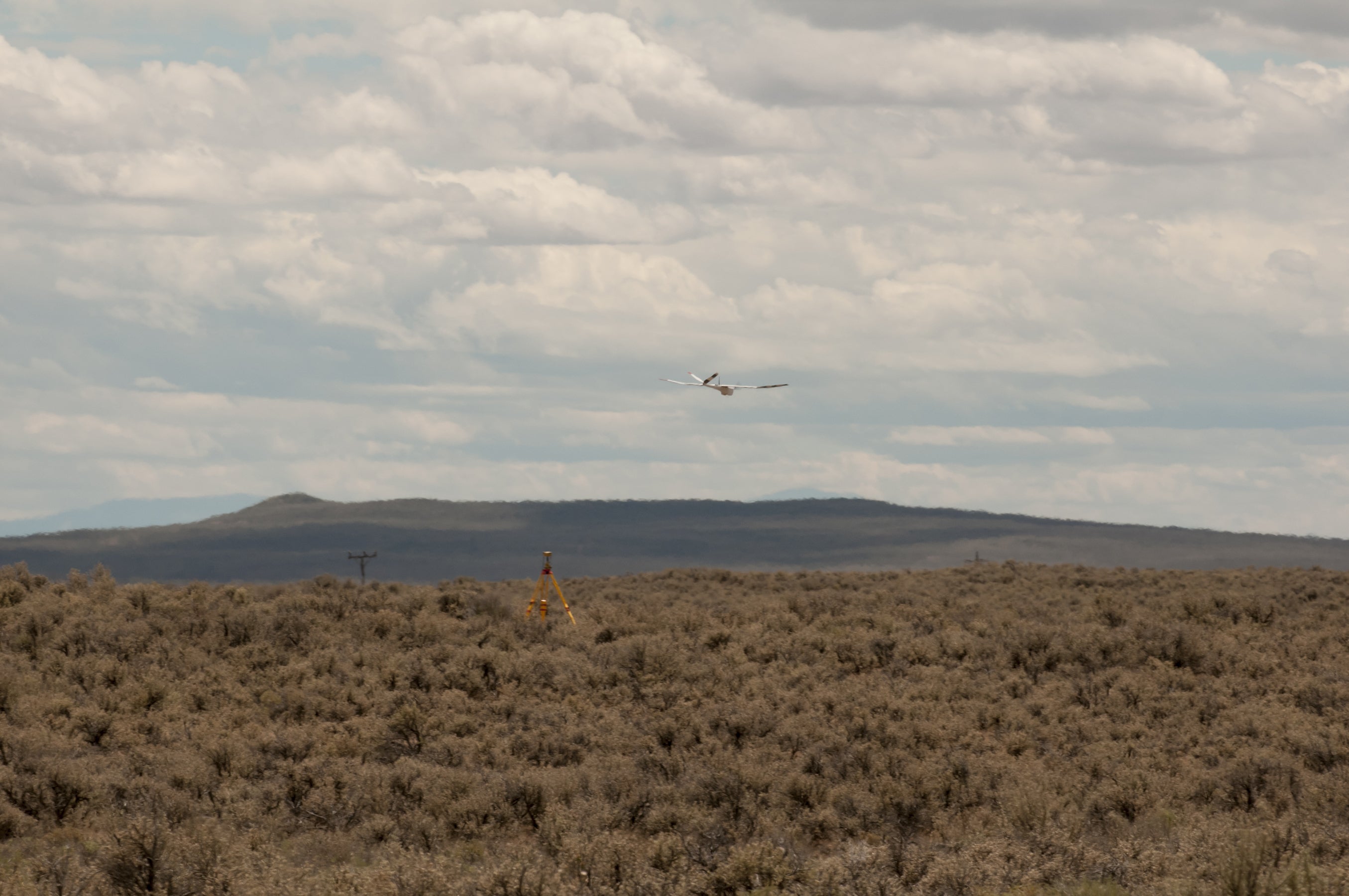
A sage-grouse, a pygmy rabbit and a pronghorn visit a lunch-buffet. They take second helpings of some dishes, completely bypass others and sniff tentatively at still more. While these proceedings might seem arbitrary or ultimately impenetrable to a human, nothing could be further from the truth.
For Boise State postdoc Peter Olsoy and biology professor Jen Forbey, the daily buffet occurring in the sagebrush steppe of Idaho is an incredible opportunity to discover the sensitive and singular tastes of the state’s herbivores. After all, an animal’s dinner-time decisions could impact not only their own health, but the surrounding environment and possibly even the state’s economy.
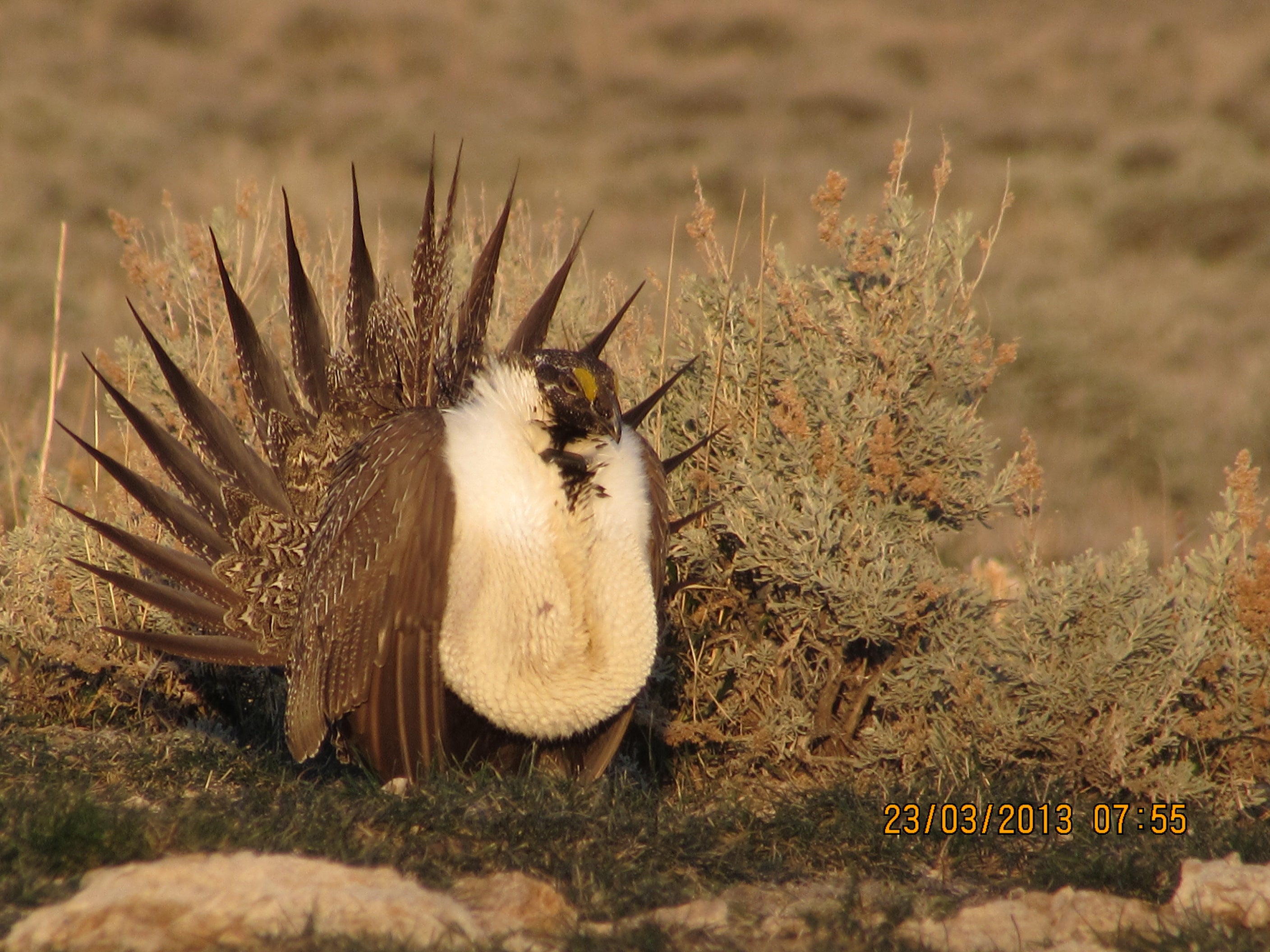
Take the sage-grouse, for example. This species is iconic to Western states, and extremely reliant on sagebrush for nutrition and habitat. So what happens if enormous swaths of sagebrush are consumed by wildfire, or urban spread? Without its primary diet, sage-grouse could be listed as endangered, which would lead to restricting activities in more than 43 million hectares of the Western U.S. The impact this would have on ranchers, recreationalists and energy developers, to name but a few, could be extremely costly.
But if scientists can learn exactly where and what sage-grouse and other herbivores decide to dine on, then measures can be taken in advance to protect and restore the most palatable food sources in those habitats.
“Pass the Sagebrush, Please.”
It all starts with the question “what do they like to eat?”
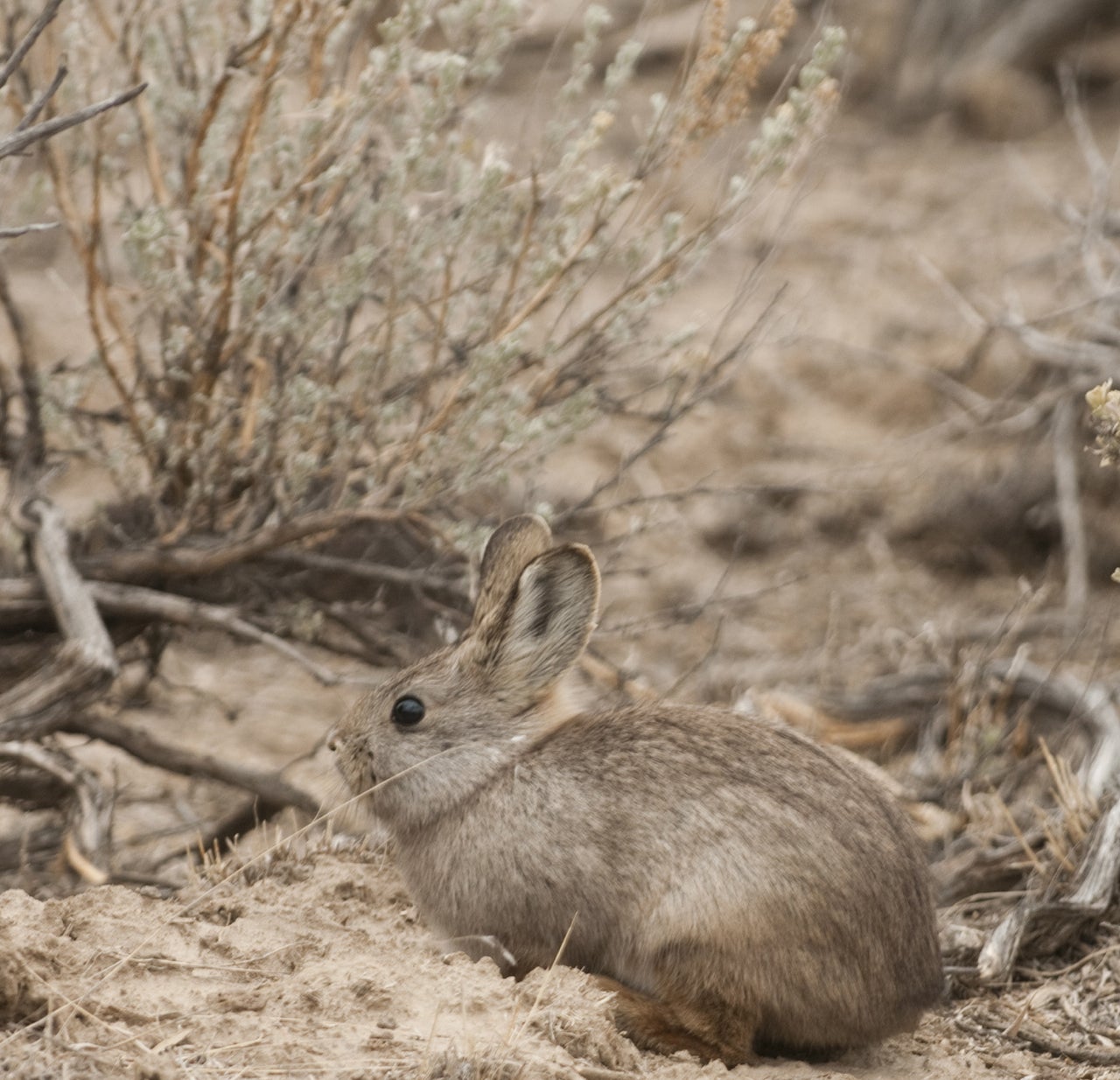
For sage-grouse, pygmy rabbits and pronghorn, the preferred meal is sagebrush. But similar to ordering spaghetti at five different restaurants, sagebrush at different locations are not identical in taste, nutrient density or balance of chemical compounds. The plants and their respective flavors are shaped by dozens of factors, such as genetics, topography, soil temperature and moisture.
The pygmy rabbit and sage-grouse know this, and plan accordingly.
Working with researchers from the University of Idaho and Washington State University, as well as state and federal management agencies, Olsoy and Forbey learned to look at environments through the eyes of these herbivores.
“All of these animals have to eat, from native wildlife like sage-grouse and pygmy rabbits to livestock, and our work is one way to identify areas of high-quality food on the landscape to conserve and to identify possible seed sources for reseeding efforts after large wildfires,” said Olsoy. “Sage-grouse populations have seen large declines in recent years, and if we don’t care about what food they eat, then we risk losing an iconic species of the West.”
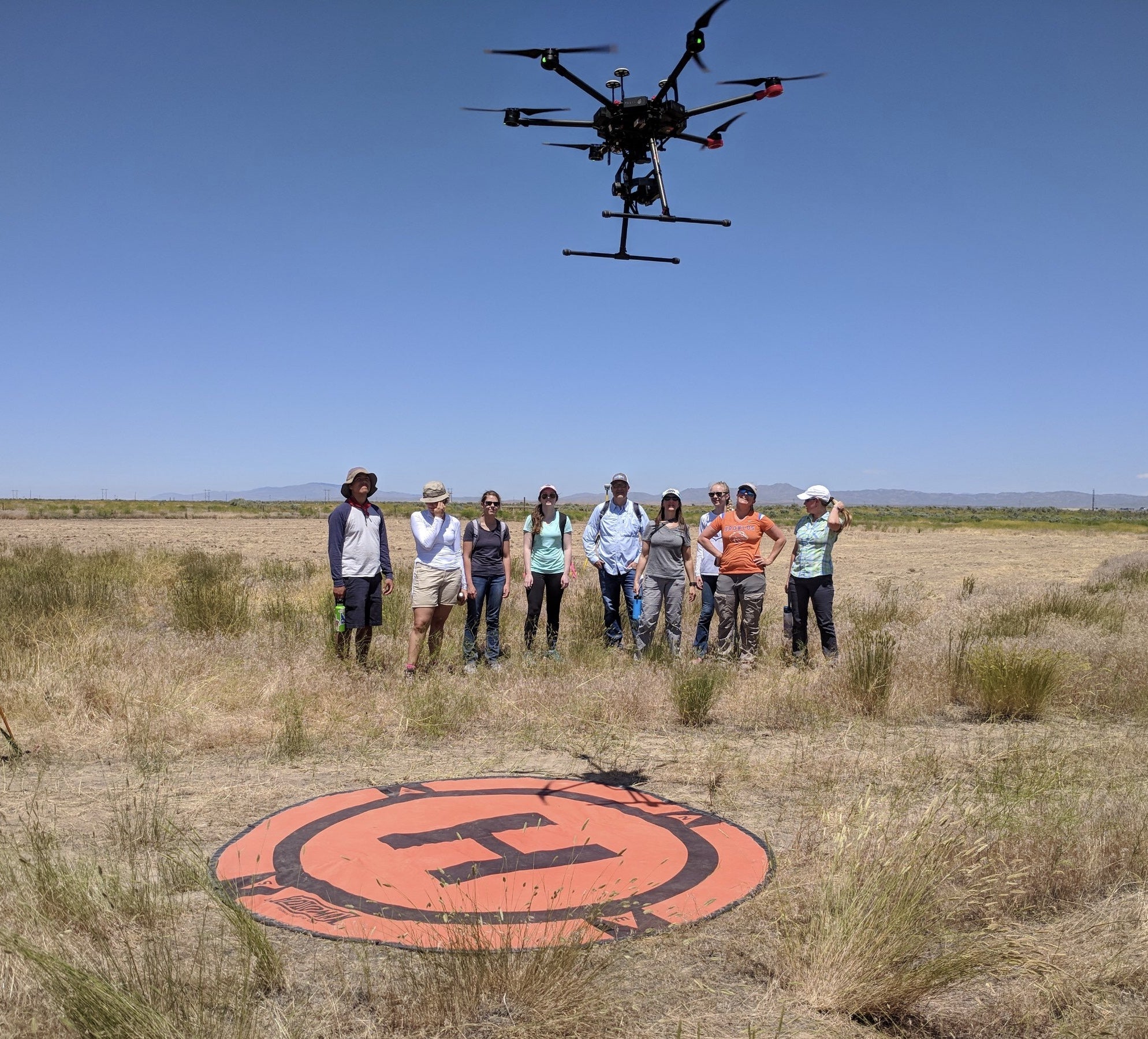
First, the team analyzed plant chemical compounds (or phytochemicals) to understand which chemicals and what concentrations explain why certain animals ate from particular parts of the sagebrush. For example, pygmy rabbits favored leaves over stems and sage-grouse favored plants that emit more in ultraviolet light. Phytochemicals impact everything from color (some emit more in UV) to taste (some are more bitter) to aroma (some are more fragrant). These chemical messages tell an animal something about how toxic or tasty a plant is to a potential consumer.
Taking the chemical knowledge obtained in the lab, Olsoy then set about finding and mapping the characteristics of ‘tasty plants’ across two separate research sites within the Idaho sagebrush steppe, covering a total of 255 hectares (or 630 square acres). Using unmanned aerial systems, or drones, Olsoy mapped the plants with the color, taste and aroma preferred by herbivores in both summer and winter. This novel research made it possible for Olsoy and his colleagues to map nutrients and toxins across large areas of local rangelands for the first time.
Foodscapes for the Future
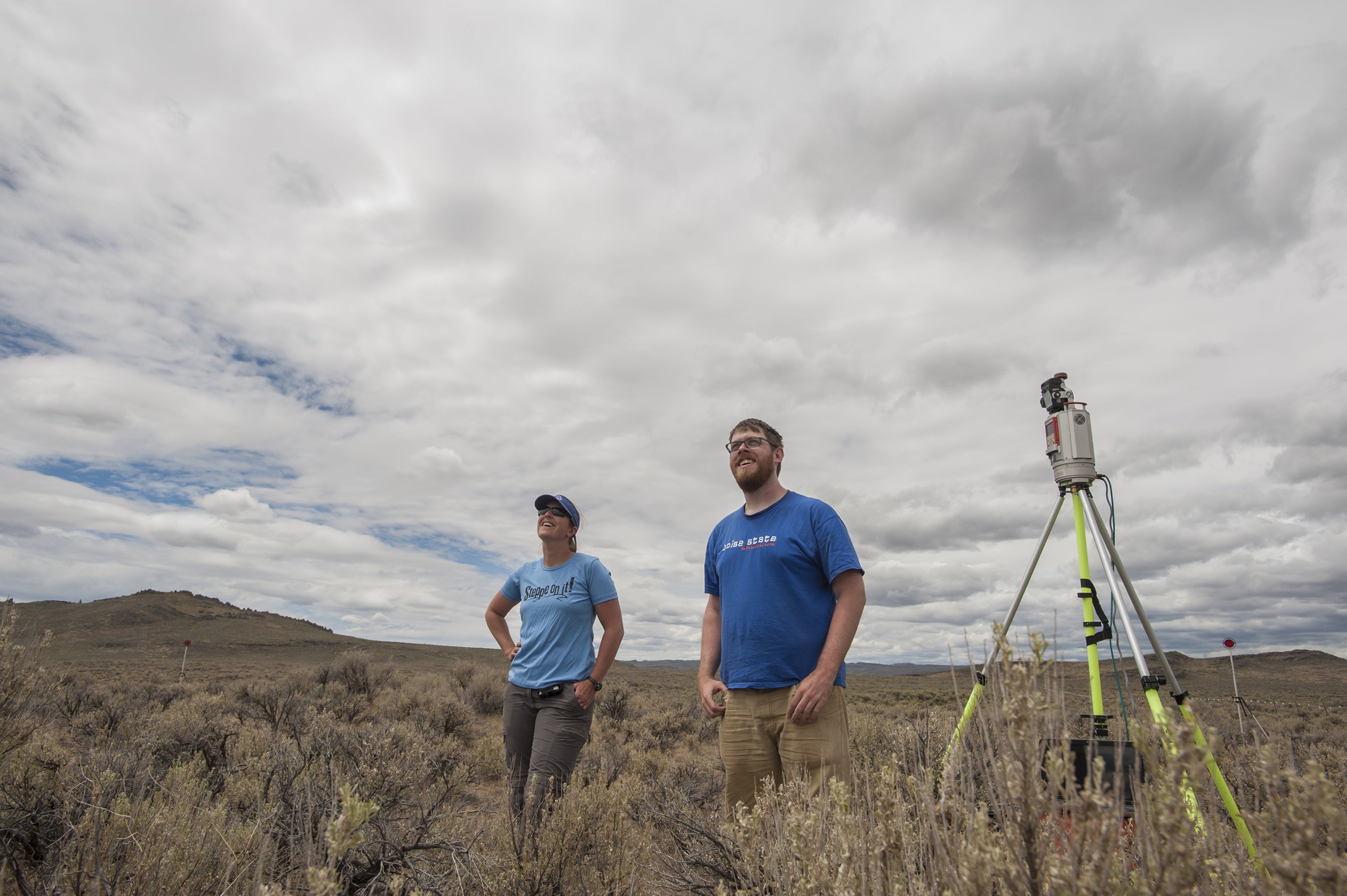
“What Peter did was actually see the world of a sagebrush ecosystem from the eyes of a hungry herbivore,” explained Forbey. “Herbivores can detect particular chemical traits in plants like protein, or UV-emitting coumarins which can be bitter to taste or volatiles, which are similar to the aromas you would get from spices in your spice racks.”
With this new method to map food-source quality from the sky, Olsoy’s goal is to empower land managers, ranchers, conservationists and ecologists to make better informed decisions in regards to planning and preserving Idaho rangeland, especially in respect to imminent threats of wildfire.
Olsoy worked with Forbey as an undergraduate at Boise State on the chemistry of sagebrush before graduating in 2011 with dual bachelor’s degrees in biology and philosophy. He then earned a master’s in geographic information science (GIS) at Idaho State University before capping his education in 2019 with a doctorate in environmental and natural resource sciences at Washington State University. While at Washington State, Olsoy was awarded a National Science Foundation (NSF) grant to both partially fund his doctoral degree and conduct collaborative research to map herbivore’s foodscapes.
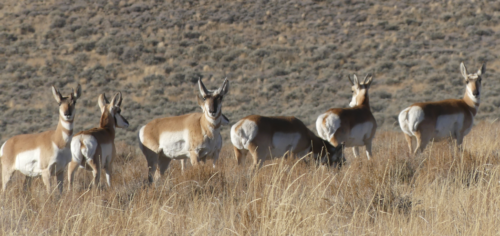
Now, as a postdoc at Boise State, Olsoy’s research is supported by Idaho’s GEM3 (Genes by Environment: Modeling, Mechanisms, Mapping) program. This $20 million dollar grant program is a collaboration of Boise State, University of Idaho and Idaho State researchers supported by National Science Foundation EPSCoR (Established Program to Stimulate Competitive Research).
The GEM3 program is committed to advancing fundamental knowledge on the mechanisms that rule how species adapt to external stressors and a changing environment, and seeks to translate this knowledge into evidenced-based resource management policies and practices for more adaptive and resilient species and landscapes.
This research is also supported by multiple grants including:
- A $6 million GUTT (Genomes Underlying Toxin Tolerance) grant awarded to Idaho, Wyoming and Nevada researchers to understand genetic and microbial mechanisms sage-grouse and pygmy rabbits use to tolerate toxins in sagebrush.
- A nearly $1 million NSF Division of Environmental Biology grant awarded to University of Idaho, Boise State and Washington State University scholars to map food-, fear- and thermal-scapes across the sagebrush steppe, which was critical in establishing the methods used in this project.
Olsoy’s research recently was published in the journal Landscape Ecology, and can be read in its entirety here.
This study was funded by the National Science Foundation (DEB-1146368 to LAS, DEB-1146194, IOS-1258217, OIA-1826801 and OIA-1757324 to JSF, and DEB-1146166 to JLR) and USDA National Institute of Food and Agriculture (Hatch Project 1005876 to LAS).
-By Brianne Phillips